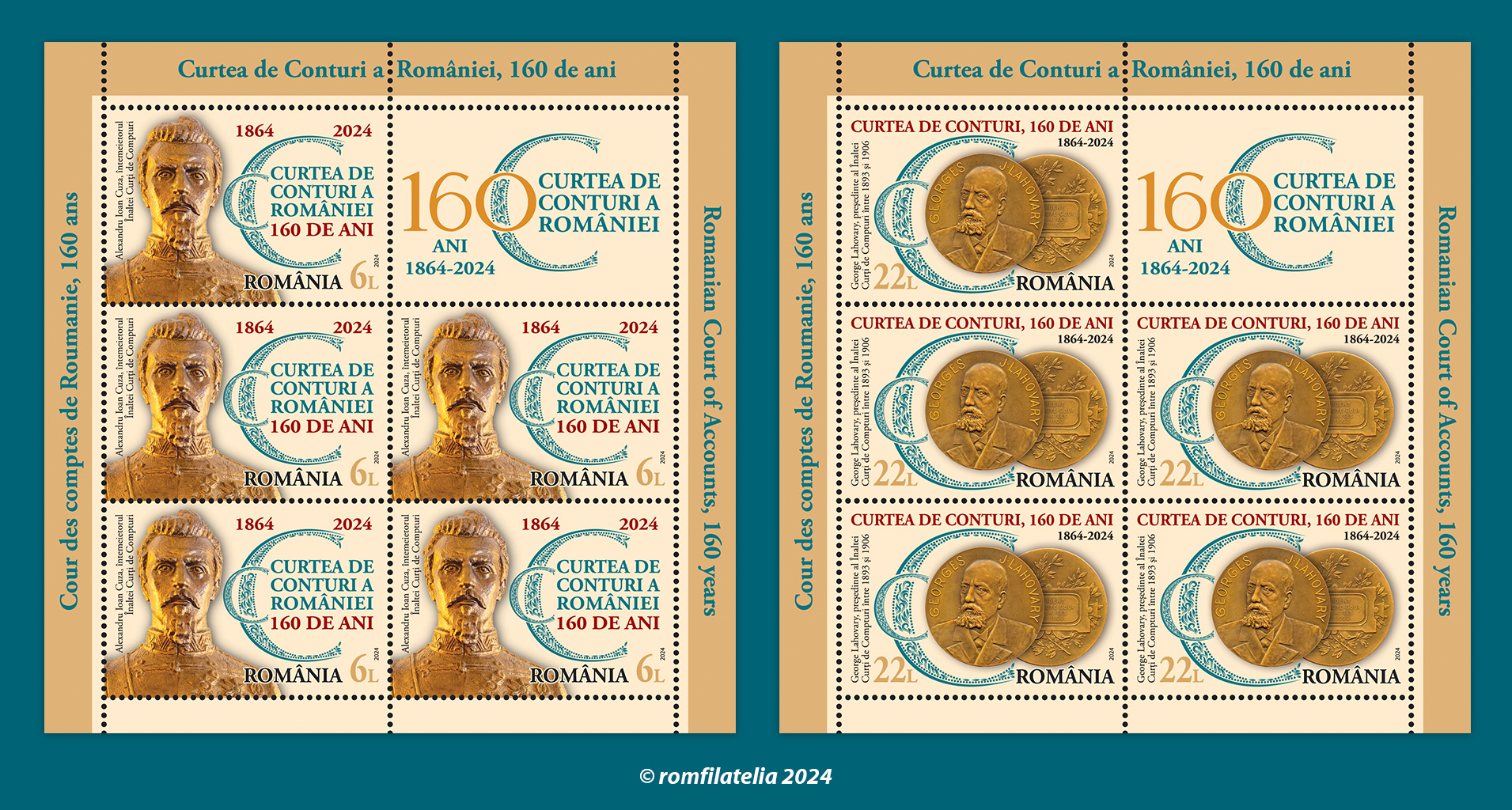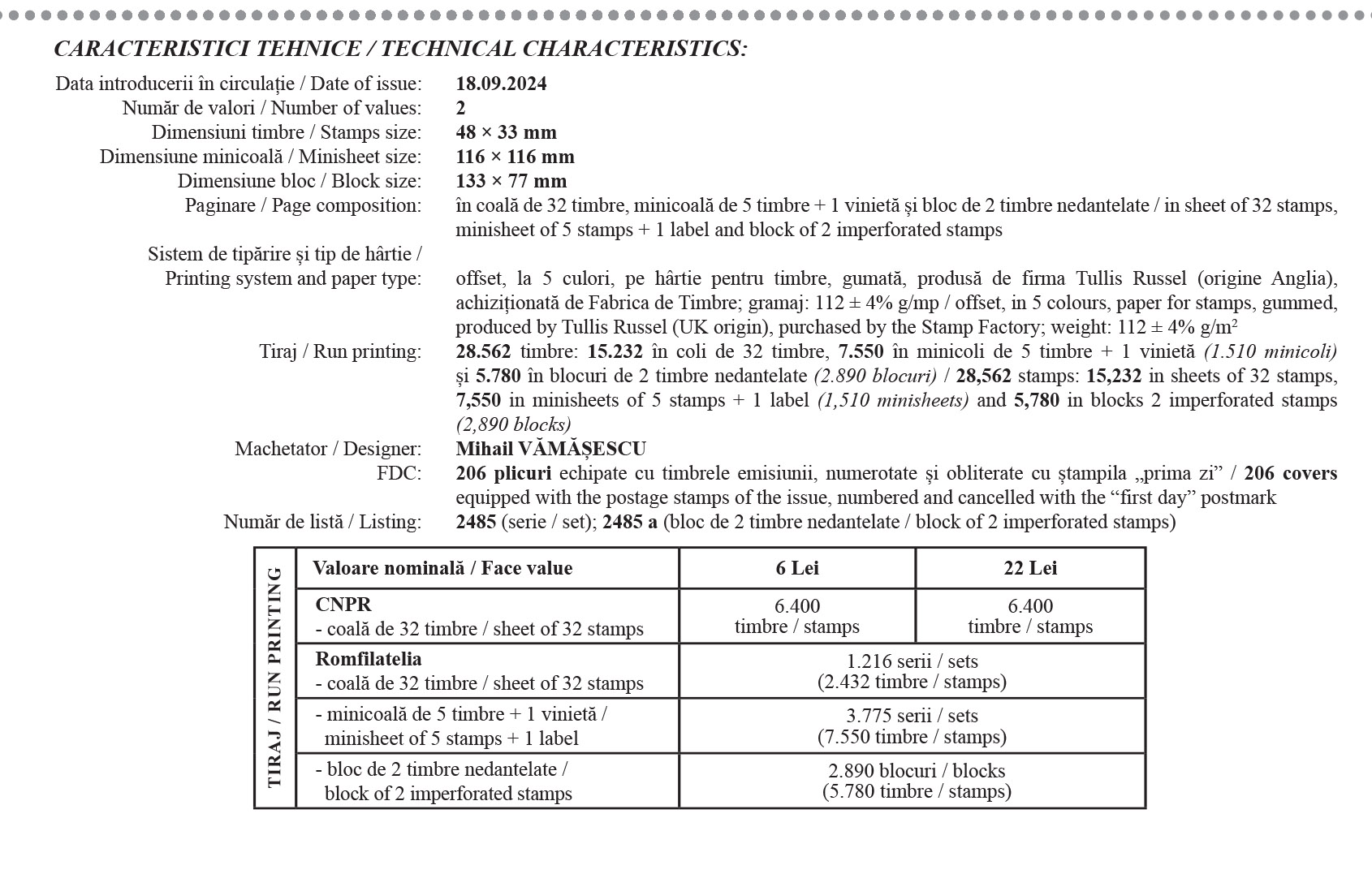 Romfilatelia introduces into circulation, on Wednesday, September 18th this year, an issue of postage stamps to mark the 160th anniversary of the establishment of a leading institution for a modern democratic state, Romanian Court of Accounts.
Romfilatelia introduces into circulation, on Wednesday, September 18th this year, an issue of postage stamps to mark the 160th anniversary of the establishment of a leading institution for a modern democratic state, Romanian Court of Accounts.
The two postage stamps and the First Day Cover of the issue Romanian Court of Accounts, 160 years, depict in their images the portrait of the prince Alexandru Ioan Cuza (face value of Lei 6) and of one of the most prominent presidents of the supreme audit institution, George Ioan Lahovary (face value of Lei 22). The image of the First Day Cover shows the architecture of the Palace of the Court of Accounts inaugurated in 1899 and the facsimile of the law establishing the institution.
A promoter of reforms designed to bring Romania among the modern states of Europe, Alexandru Ioan Cuza promulgated on January 24th, 1864 the law establishing the Court of Accounts, whose main duty was to control the management of public finances, strictly following the requirements of legal, correct and systematic administration of them, with the clear aim of satisfying the general interests of the state.
The desire to remove the new institution from the influence of politics gave credence to the idea of appointing the members of the Court for life, thus giving stability to the institution and ensuring its dynamic and efficient work.
The importance and prestige of the Court of Accounts were also established by the decision to provide it with its own premises, corresponding to the professional requirements and skills of its employees. Under the coordination of the architects Constantin Băicoianu and Nicolae Cerchez, a monumental building was erected and inaugurated in the presence of King Carol I and Prince Ferdinand on May 11th/23rd, 1899.
The role of the Court of Accounts and its rank in the hierarchy of state institutions were reinforced by the Constitutions of 1866 and 1923, as well as by other special laws. In the interwar period, through the Law adopted in 1929, the control and judicial powers of the Court of Accounts were strengthened, the institution receiving the same rank as the High Court of Cassation.
The Court of Auditors went through a difficult period during the economic crisis and the war years, until 1948, when the totalitarian communist regime abolished this institution with a long tradition.
The Romanian Constitution of 1991 reinstated the Court of Accounts among the essential institutions of the democratic state. By the will of the Parliament, the Law on the organization and operation of the Court of Accounts was adopted and then promulgated on September 8th, 1992.
After its re-establishment, the Court of Accounts received multiple control powers, with the intention of recovering as effectively as possible the damages found. At the same time, as supreme audit institution, it has built an international profile by actively participating in international bodies, as a member of the organizations of supreme audit institutions INTOSAI (International Organization of Supreme Audit Institutions), EUROSAI (European Organization of Supreme Audit Institutions), AISCCUF (Association of French-speaking Supreme Audit Institutions).
In 2005, the Audit Authority was established within the Court of Accounts, with the main objective of auditing the European funds granted to our country.
At the end of the 2020s, an extensive reform process started, based on international auditing standards and whose main goal was to streamline the audit activity so that the Supreme Audit Institution of Romania becomes a real support in the development of the public sector and the efficient management of public funds.
We are witnessing a paradigm shift towards avoiding public waste through a constructive audit, facilitated by open communication with the audited entities and concluded with recommendations that contribute to their good governance.
Romfilatelia thanks the representatives of the Romanian Court of Accounts for their documentary support granted in the development of this postage stamps issue.









